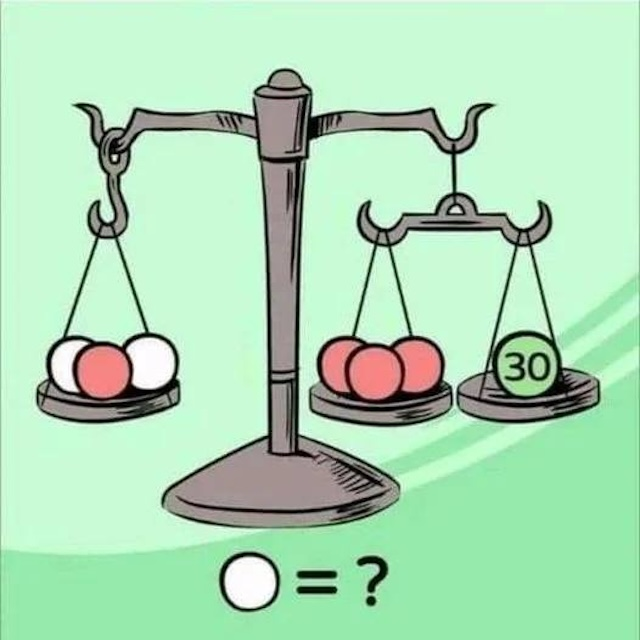Ready to challenge your problem-solving skills? This balance puzzle will put your logic and attention to detail to the test. Your goal is simple: find the value of the white ball by carefully analyzing the scales. While it may seem straightforward, many people get tripped up by small details or rush through the steps too quickly. Do you think you can solve it?
Take a deep breath, grab a pen and paper if needed, and let’s dive into this tricky math puzzle together!
The Puzzle: What’s the Value of the White Ball?

In the image (or scenario), there’s a set of scales perfectly balanced with different colored balls acting as weights. Each ball has a numerical value, and your task is to determine the value of the white ball.
Sounds easy, right? Well, don’t be fooled! Many people make simple yet costly mistakes when solving puzzles like this. Let’s break it down step by step to ensure we get the correct answer.
Common Mistakes People Make in Balance Puzzles
Before we solve the puzzle, let’s address the most common mistakes people make when tackling problems like this:
- Skipping steps – Some people rush and assume values without carefully working through the logic.
- Ignoring balance rules – Remember, both sides of the scale must be equal in weight.
- Misinterpreting given values – Always double-check the information provided.
- Losing track of calculations – Writing out each step can help avoid simple errors.
Now that we’re aware of the potential pitfalls, let’s work through the solution carefully.
Step-by-Step Breakdown: Solving the Puzzle
To determine the value of the white ball, we’ll assign variables and solve the equations systematically.
Step 1: Define Variables for Each Ball
Let’s assign values to each colored ball:
- Let x represent the value of a red ball.
- Let y represent the value of a white ball.
Now, let’s analyze both sides of the scale.
Step 2: Analyze the Right Side of the Scale

Looking at the right side of the scale, we see that three red balls balance against a total weight of 30. This gives us the equation:
3x = 30
Step 3: Solve for x (Red Ball’s Value)
To find the value of x, divide both sides by 3:
x = 30 ÷ 3
x = 10
So, each red ball is worth 10.
Step 4: Analyze the Left Side of the Scale
On the left side of the scale, we see:
- Two white balls
- One red ball
- The total weight on this side equals 60
This gives us the equation:
2y + x = 60
Since we already found x = 10, we substitute it into the equation:
2y + 10 = 60
Step 5: Solve for y (White Ball’s Value)
Now, subtract 10 from both sides:
2y = 60 – 10
2y = 50
Divide both sides by 2:
y = 50 ÷ 2
y = 25
So, the value of the white ball is 25.
Final Answer: The White Ball is Worth 25!

Did you solve it correctly? If so, great job! You paid close attention to detail and followed the logical steps carefully. If not, don’t worry—puzzles like this take practice!
Why This Puzzle Challenges Your Brain
This type of balance puzzle sharpens your critical thinking and problem-solving skills. It requires:
- Logical reasoning – Understanding how weights distribute evenly.
- Basic algebra – Using equations to solve unknown values.
- Attention to detail – Avoiding common miscalculations.
If you enjoy puzzles like this, keep practicing! The more you challenge your brain, the sharper your math and logic skills become.
Did You Get It Right? Share Your Answer!
We’d love to hear from you! Drop your answer in the comments and let us know if you solved it correctly on your first try. If you enjoyed this puzzle, be sure to explore more brain teasers to keep your mind active and engaged.
Happy puzzling! 🎉


